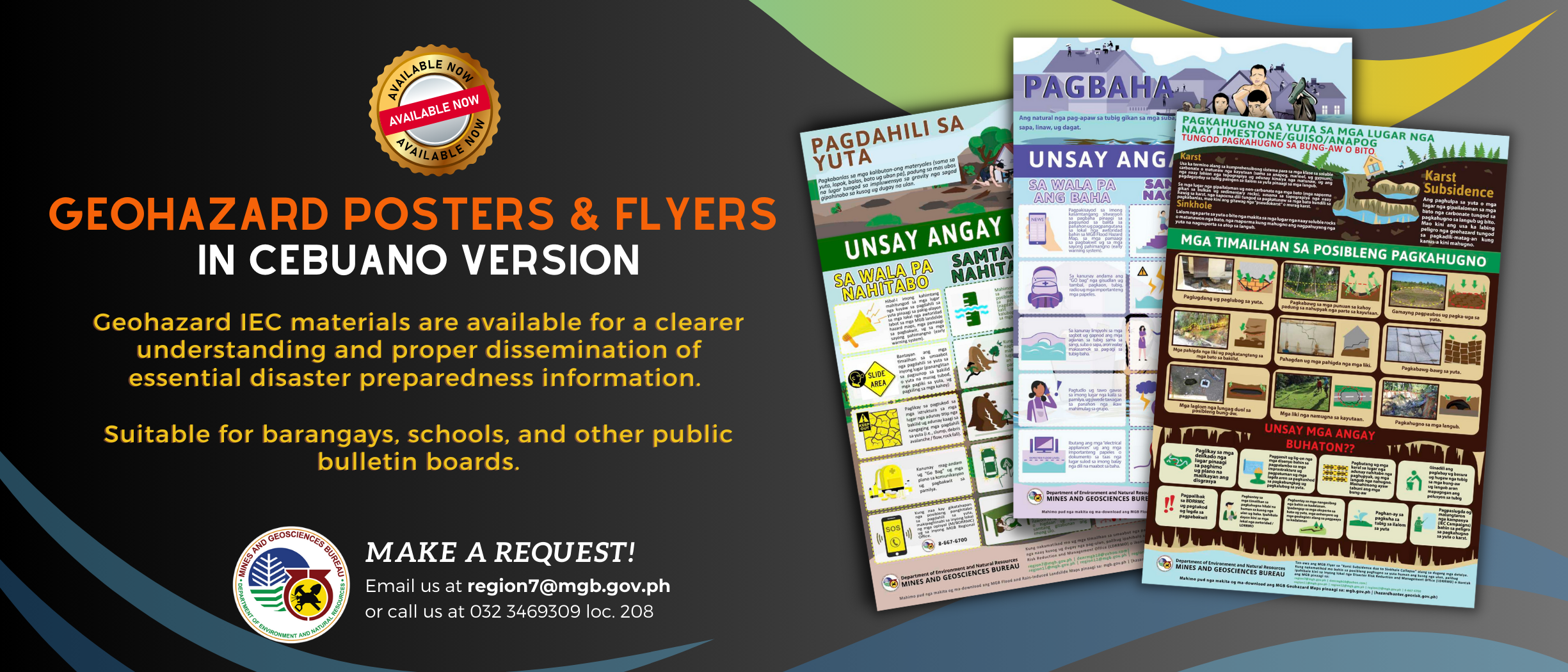More than 200 barangays have been warned on the possible landslides, flooding, and storm surges taking a cue from a warning issued by the Philippine Atmospheric, Geophysical and Astronomical Services Administration (PAGASA) that a tropical storm ‘Ruby’ is expected to enter into the Philippine Area of Responsibility (PAR) today.
“We need to send a strong message to the local government executives to undertake the necessary preemptive evacuation efforts in low-lying and landslide-prone areas in Bohol, Cebu, Negros Oriental and Siquijor as yet another typhoon has entered the country which could bring a lot of rains,” said Mines and Geosciences Bureau (MGB) 7 Regional Director Loreto B. Alburo.
Although tropical storm ‘Ruby’ has been described as less powerful than super typhoon “Yolanda” that struck the Visayas which caused heavy damage to property and massive loss of lives, Alburo said that being prepared always or even “overprepared” would be the better option if only to ensure the safety of the communities who may be affected.
“There are factors that contribute to flooding which includes proximity to perennial river creek system, poor drainage facility, inherently low lying area, proximity to coastal area, heavily silted river or creek, and encroachment along natural drainage channels,” sad Department of Environment and Natural Resources (DENR) 7 Regional Executive Director Dr. Isabelo R. Montejo.
Flooding occurs when the level of a body of water rises until it overflows its natural or artificial confines and submerges land in the surrounding area due to intense and prolonged precipitation and other geologic factors.
“Our mayors and barangay captains should keep on areas that are found to be highly susceptible to flooding and landslides which have been known to them as indicated in the geohazards threat advisory issued to them,” Alburo stressed.
Storm surge-prone areas are Arpili, Balamban; Tungkil, Minglanilla; Talisay, Maricaban, and Kinatarcan, all in Santa Fe; Tarong, Mancilang, and Codia, all in Madridejos; Patao and Pitogo in Bantayan; and Tanke in Talisay City.
He also urged local chief executives to get hold of the geohazard maps, and implement the necessary measures to reduce the impact of landslides and flooding within their areas of responsibility.
Montejo warned that the volume of water brought by Ruby might aggravate soil conditions that have been either saturated by rains or loosened by trees uprooted by Queenie, thereby causing landslides.
Meanwhile, in Cebu City , 19 barangays are highly susceptible landslides, namely, Lusaran, Binaliw, Guba, Budlaan, Malubog, Buot-Taup, Busay, Sirao, Taptap, Tagbao, Tabunan, Pung-ol Sibugay,Sudlon II, Sudlon I, Sinsin, Buhisan, Pamutan, Sapangdaku, and Adlaon.
Barangays Tagjaguimit, Alpaco, Balirong, Mayana, Naalad, and Cogon in City of Naga. ; 11 barangays in Balamban: Hingatmonan, Lamesa, Luca, Ginatilan, Cabasiangan, Matun-og, Cansomoroy, Gaas, Magsaysay, Cabagdalan, and Duangan.
Five barangays in Toledo City : Tungkay, Pangamihan, Bagacay, Loay and Don Andres Soriano; Lamac in Pinamungahan; Five barangays in Asturias :Agbanga, Baye, Bairan, Kanluangan and Sak-sak.
All mountain barangays in Talisay City, particularly, Manipis; Brgy. Doldol, Purok 3 in Dumanjug; and Cansalonoy in Ronda.
In Bohol, those portions of those areas which have been affected by the quake are advised to take the necessary precautions and to implement proactive evacuation are Tagbilaran City, Baclayon, Corella, Cortes, Alburquerque, Panglao, Dauis, Loon, Calape, Catigbian, Balilihan, Batuan, Sagbayan, and Carmen.
Alburo said the assessment reveals that there are five barangays in Cebu City that are considered to be most hazardous to flooding and these are Kasambagan, Kinasang-an, Labangon, Mabolo, Bonbon, and Cebu City downtown areas and along the Guadalupe River; and seven barangays in Mandaue City to include Subangdaku, Mantuyong, Umapad, Opao, Alang-alang, Guizo, and Pakna-an.
In Negros Oriental, five barangays in Guihulngan City , namely, Humayhumay, Imelda, Mabunga, Sandayao, and Tacpao have high susceptibility to landslides. There are 12 barangays with moderate to high susceptibility to landslide and these are Bakid, Banwaque, Calamba, Calupa-an, Linantuyan, Mabunga, Maniak, Plagatasanon, Planas, Trinidad, Binobohan, and Villegas.
In La Libertad, nine barangays with high landslide susceptibility are Aniniaw, Aya, Biga-a, Guihob, Kansumandig, Mambutod, Managondong, Pangca, and Pitogo. Barangay Mandapaton has moderate to high susceptibility to landslide.
Eleven barangays with moderate susceptibility to landslide are Manluminsag, Busilak, Cantopa, Elecia (Talostos), Eli, Manghulyawon, Martilo, Nasungon, San Jose, Solongon, and Tala-on.
Around nine barangays in Bayawan City , namely Banga, Maninihon, Poblacion, Villareal, Nangka, Suba, Ubos, Pagatban and Kalumbuyan are flood-prone areas.
Also in Siaton, barangays Poblacion II, Poblacion III, Poblacion IV, and San Jose were flood-prone areas; and barangays Calicugan, Maloh, Cabangahan, Giliga-on, Bonawan and Apoloy area landslides-prone areas.
In Basay, the flood-prone areas are barangays near Tyabanan, Pagatban, and Basay rivers.
A total of eight barangays in Dumaguete City are flood-prone areas, namely, Candau-ay, Cadawinonan, Tabuctubig, Batinguel, Poblacion, Junob, Poblacion 2, and Bagakay.
In Siquijor, six barangays have been assessed to be highly susceptible to landslides and flooding and these are Libo in Enrique Villanueva; Bintangan, and Helen, in Larena; and Cang-isad, Luyang, and Sabang, in Siquijor.






